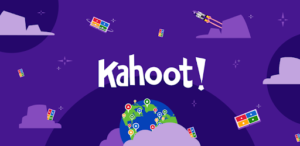Introduction: Student in Grade 10
For the following case study, I have received consent from the student to use discussion we had in regards to their learning disorder, permitting I keep their identity anonymous. To ensure this, I will reference them as ‘student (they/them)’ throughout the duration of the case study itself. The student I have selected for this study was in an observational class of mine while attending Wednesday field visits at Belmont Secondary School. While having the opportunity to observe some classroom settings, I also was given the chance to work and give additional help to some students who needed it. It was during this time that I met the student. This student was in a grade 10 English class and their struggle was primarily mental. The learning disorder the student has is called working memory disorder/deficit. For consistency purposes, I will use deficit. By definition, working memory is, “Working memory enables us to keep several pieces of information active while we try to do something with them” (Working Memory Deficit, 2020). Essentially, this means that working memory deficit is the difficulty in processing a few to several pieces of information at one time. Due to this, the student struggles with a variety of different elements when it comes to the classroom and school environment. The challenges consist of things such as: composing written work, reading comprehension, listening, additional time to process information and complete assignments to list a few. These challenges have made it difficult on the student in terms of building academic confidence within the classroom and schooling setting but also growth as a learner.
photo-1601397922721-4326ae07bbc5
Environment:
As I was introduced to the classroom, my observation teacher mentioned to me this student struggled greatly in class, but I was not informed of marks or previous assignments. My understanding was that they struggled with listening, interpretations of underlying meanings of stories and grasping the concepts introduced within the class itself. The areas this student seemed to thrive in according to the teacher were athletics as well as social interaction with classmates and friends as well. It was only when school related work came to the table that the difficulty became much more apparent. In terms of recalling what the classroom management and instruction of the classroom was like, I would say it was similar to that of any other high school English class. With that being said, Belmont has structured their semester system to be a 1-8 semester. Students take a class for 5 weeks, with 12-15 students total in that class. This allows for the teacher to have any easier time with classroom management and the teaching of concepts. For this particular student, the teacher tried their best to check in when they could, but it was apparent an EA was needed in the classroom so more often than not I would assist this student on the days I was there. One of the things I noticed early on was how the student loved to talk and interact with classmates and didn’t do well focusing on the lesson unless reminded to stay on track or focus up. The teacher described to me some resources that were given to him to help the student. These resources were: providing pre-class reading materials, voice to text writing software, additional time for due dates, additional time during tests and organizational planners to help structure ideas for writing. After hearing the list of things, the teacher mentioned, it sounded quite similar to an IEP that was built for the student. The student also has a support block where he works with a case worker a few times a week as well. This allows for check-in’s and understanding of progress that the student is making over the course of the semester. Although a plethora of resources are provided, it is apparent that the student could benefit from an EA for consistent assistance. The student from what I have seen struggles to grasp concepts that are introduced, pay attention and stay focused on the tasks at hand, and voicing their opinion and thinking within their writing. Although the student does struggle with several different elements, they show great work effort when finding that focus and are extremely organized when it comes to note taking and planning.
photo-1581726707445-75cbe4efc586
Analyze:
Thinking of why the student may be having difficulties comes down to a few things for me. The first that comes to mind is the weakness of processing information that involves phonological memory and more obviously, the working memory. The phonological memory applies directly to the difficulty understanding the spellings of different words and mathematical equations. Additionally, the working memory connects with this because the brain of the student struggles with retaining the short-term information long enough in order to be able to then process it and eventually, apply it.
Things that I see working for this student inside the classroom and also at home consist of: the issuance of pre-reading activities in advance so the student has time to go over it before the class, additional time to process information/complete assignments and the voice to text software. By providing the student the activities prior to class, it allows the option of reading over it, making notes, asking questions and gaining more clarification before going into that class where the activity or reading done. In addition to this, the additional time to process information/complete assignments connects with this because as the student learns the information at their own pace, they are then able to naturally apply it as they learn it rather than simply having to spit back that information after having just read it. Finally, the voice to text software the student uses on their computer allows for the student to speak into the computer and get their thinking/opinions out while it is fresh in their head. This is a great tool for both note taking when doing any pre-reading or pre-writing assignments, or when writing a paragraph or short story of some kind.
As for the things I do not see supporting the student, I first think of the classroom environment without additional assistance. In a setting of reduced class sizes, a student with a learning disability needs the extra assistance to have guidance in the right direction and help staying attentive. This will allow for them to then be more engaged and focused on the task at hand. Additionally, I don’t see the student doing well when having to follow along and take notes as the information processing just simply will not happen. The student will write down things word for word, but take nothing away in terms of actually learning that information.
Reflecting on the past five weeks at Belmont, a couple of moments that were frustrating for both teacher and student come to mind. For the teacher, a frustration that was voiced was the student’s inability to use class time in an effective and useful manner. What was meant by this is that frequently during classes, the student loses attentiveness and will begin to socialize or simply check out from the class work at hand. This then makes it difficult for the teacher to feel sympathy for the student because of the wasted time.
On the contrary, a moment when the student became visibly frustrated was during an assignment in which the students were working on a reflection of a movie. For the student, recalling particular quotes that were referenced was next to impossible and with the teacher going over the entire worksheet, this led to the student feeling as though they were falling behind and having to work on the assignment with myself, while their classmates moved on. This got the student extremely frustrated and down on themselves, making for an early exit of the class that day. Although the teacher is not able to constantly wait on the student, I believe that by providing them an alternative setting such as an office space or even working in the hallway would allow for the student to feel better about having not finished the assignment just as of yet.
Ultimately, I equate these particular scenarios to in the classroom is from the perspective of the teacher, not understanding what it is that student is going through. The teacher does not know what it is like so therefore trying to comprehend why the student does things a certain way can be difficult to fathom. It also can be frustrating from the perspective of the teacher putting together alternatives for the student only for them to not be engaged. Something I believe that can be considered to help grow from this is the competency in the teacher’s curriculum that is to have a growth mindset that we are not the be all, end all and with new information and understanding, we can grow as educators each day. We have to learn from particular instances and then grow and build off of this. From the perspective of the student, I realized their frustration is exercised from the fact their confidence with schooling is quite low. The student gets frustrated when they are not able to properly interpret concepts or if they struggle to voice their opinion with what they wish to say. Over the course of the semester, small prompts from myself, or the teacher leading class has helped jumpstart ideas for the student to Segway into the point they were trying to make.
Solutions:
There are many different strategies that the teaching staff who work with the student have gathered in an attempt to make academic success come as naturally as possible but with that also leads to trial and error as well as things to grow in. When reflecting on some possible solutions that may assist the student, several ideas came to mind. To begin with, using a complex that I have learned this semester called the scaffolding complex. What this is, providing a student with a variety of options and opportunities to break down and explore that learning. This can be done by the teacher breaking down things into multiple steps or elements of what the student is looking at. In a book titled Theory Into Practice, there is a chapter titled, “Working Memory Weaknesses in Students With ADHD: Implications for Instruction” written by Rhonda Martinussen and Ashley Major. In this chapter the authors touch on this when writing, “to enhance their students’ ability to follow multistep directions, teachers can deliver instructions in short chunks and pause between each chunk to give the students time to process the information” (2011, p. 70). Additionally, using a multimodal delivery to help plan can allow for learners who struggle to state their mind during writing or activities use their strengths by utilizing an organizational planner. This can be shown when Martinussen and Major state, “Students who have poor working memory may also need external memory aids (eg. Cue cards, graphic organizers). These aids can help the students keep track of the steps involved in the complex task (2011, p.70-71).

By mentioning EA’s, I also must mention the shortage of having them within classrooms as that is an ongoing problem we face in education. Something that was brought to my attention was an online platform that would allow for students to participate and complete classwork at their own pace, as they felt comfortable with the material. A few examples of this would be platforms such as Moodle, Blackboard, or even Google Classroom. I would choose a platform along the lines of these three things because having used them previously, I am familiar but also, they are very straightforward and user friendly. By moving this learning to an online site, it allows this student to work at their own pace either inside or outside of class, they are not limited to what they are working on and they can feel the sense of accomplishment at their own pace.
 A look at the user friendly layout of BlackBoard.
A look at the user friendly layout of BlackBoard.
Another great example of an online interactive organizer would be something I was recently introduced with, which is Trello. Trello is essentially a site that can be utilized for a plethora of different things. It gives option of things you have to do, have completed, questions you may have, etc. This can be extremely helpful as well with sorting class assignments, or even breaking down individual projects making them feel much more attainable for the student.

Strategies:
When thinking of strategies, it is easy to come from an outside perspective but for the student these ideas may just not be appealing and they may have no interest in utilizing them at all. It will take a trial and error method to establish what strategies work for that particular student, which can often differentiate from that of another student with the same learning struggle.
Looking at what potential strategies I think would not only engage the student, but motivate them as well; two come to mind that I would recommend moving forward. The first would be incorporating visual aids to help the student visually perceptualize the concept that is being introduced. What this means for example, is that within a lesson, by providing the student with a visual breakdown of the step-by-step process of writing an essay, they will better understand this. In the article, Optimizing Word Learning via Links to Perceptual and Motoric Experience written by Lea Hald, Jacqueline de Noojer, Tamara van Gog and Harold Bekkering, they go on to verify this when writing,
“There are many concepts that have a strong perceptual component to them. For instance, we use gustatory experience to distinguish concepts like sour, tar and piquant but rely more on our tactile visual experience to distinguish concepts like cotton, feathery and silken. Brain-imaging research supports this idea” (2016, p.497).
Well if the brain imaging acts in such a way in relation to perceptual understanding, for this student struggling with working memory deficit, it becomes apparent that by using a visual aid to construct their understanding, it has potential to resonate on a much higher level. A tool that would be extremely helpful in this sense would be a graphic organizer. This allows for the said student to structure their work so a visual breakdown to how what they are working on is supposed to flow. This also allows for the learner’s interpretation and understanding to grow. Below are a couple of different examples of graphic organizers that can be used:


paragraphstructure-140623223323-phpapp02-thumbnail-4.jpg
Moving onto the second strategy that comes to mind, I think by incorporating educational video games into the class for the student, this can also engage them in this visual way of connecting the information as well. Looking at a source I found in a book titled Children, Youth and Environments, by Elizabeth Simpson, there is a chapter titled, “Video Games as Learning Environments for Students with Learning Disabilities.” Within this chapter, the author discusses their findings when applying video games into an educational setting. An interesting quote Simpson makes is, “Research indicates that video games may tap into learning opportunities that are responsive to those deficits more effectively than the traditional classroom environment” (2009, p.310). Simpson goes on to mention how the deficits it can help contribute to consist of motor development, intellectual development as well as affective and social development. Thinking of educational designed video games such as Kahoot, this style game where the student is able to see the information, process it, and select an answer while also getting immediate feedback would be a great resource or outlet to growing as a learner. Not only can this enhance the students learning by connecting visually, but it also is providing multimodal learning by connecting class related resources to a video game styled option they are using.

Is8qjBUO5h0R0tQu_yaj6eSzA-tcFskgb0-8TBq0-V2qRGDUOaGxj5VIb95m353h2qNV
In addition to Kahoot, a new resource I have found is called Classcraft. This can be used in classes such as social studies, science, even math, where by selecting the correct answer, you earn points. By earning points, you are able to purchase in game rewards or choosing a song(s) to listen to in class during work periods. This game is unique in the sense that the activity or lesson you intend to teach/quiz can be changed to whatever structure you would like. This then allows for the freedom and ability to change things as you see fit, or keep the same if you find a method that works best for the student.
Conclusion:
In conclusion, although I believe these practical strategies would apply to the student I have worked with over the past five weeks, that is not saying when I get into my next class that a student with a similar learning disability would have these also be applicable. Each learner is different and the strategies that can be used to help enhance success will vary. Although the student I worked with has difficulties with composing written work, reading comprehension, and listening, by adding some new elements to their classroom experience can bolster their confidence moving forward as they continue on their educational journey.



Leave a Reply